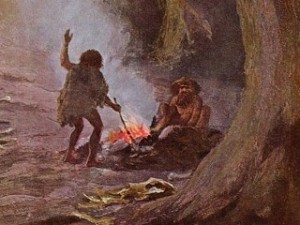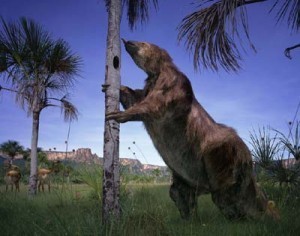The History of Monsters

The first story is told.
From the beginnings of humanity, gathered around the first man-made fires in the mouths of caves, humans told stories. They were stories meant to explain the unexplainable, to make sense of the world.
But there was also a spark of creativity that came with these stories. That spark, fed by fear, wonder and the warmth of fire, drifted out from the campsites and floated on the wind.
The sparks landed out in the wild and waited. The more the stories were told and passed from generation to generation, the greater the strength of those sparks. Until one day, the first spark of story flashed and took form.
One by one, as humanity grew and evolved, the sparks took on flesh and bone and scale and fur.
Frightening monsters appeared to early man, further nurturing the stories that were told, and the all-important belief that followed the tales gave the creatures strength.
Bigfoot, Sasquatch, and the Abominable Snowman were among the first to appear, since they closely resembled the storytellers, only bigger, hairier, and more primal. Serpents of enormous girth roamed the woods and the lakes. Birds the size of mammoths darkened the sky.
In those early days, nearly everything was based on something familiar, but exaggerated in size and ferocity.
History moved forward, and humanity moved with it, building structures, learning agriculture, going to war, and creating cities. One thing remained the same, no matter how far humans advanced. There were always storytellers.
Fairies and closet monsters, angels and demons, chimera and gremlins. Together, we created them all. They live because our ancestors believed.
Once life takes form from words, it’s no longer under the control of the teller. Autonomous life goes out and feeds, reproduces, and evolves in the same way that man does. Monsters are not ours to control, nor can we wish them away.
We provided the sparks and fed them with our emotions, but what came of them are monsters quite separate from us. They have their own rules, and they answer to their own authority.
In a way, we could claim to have created the monsters. But really, all we did was plant the seeds. What exists in the shadows and hidden places now is not necessarily what was originally imagined. Monsters grow and change, and each individual has his or her own personality.
Nature uses whatever is available to populate itself. Humanity is merely another tool, like pollination or photosynthesis.

The giant sloth.
It’s quite possible that somewhere in the prehistoric past, a giant ground sloth, in its slow-dreaming amble, thought up a fierce, nearly-hairless creature that ate meat, ran on two legs, and could climb trees.
And the spark landed and took on flesh.
And the giant sloth didn’t name us anything. Because, seriously, sloths can’t talk, no matter how big they are.



